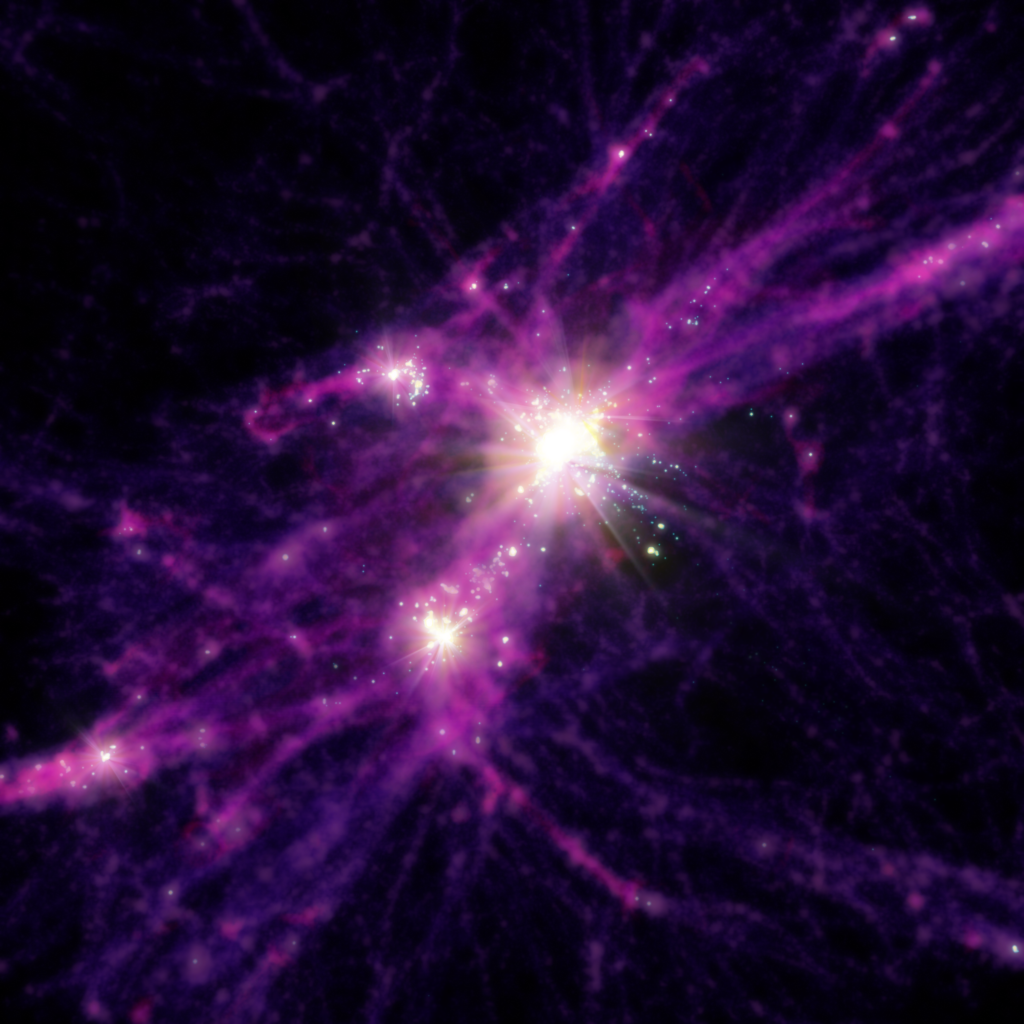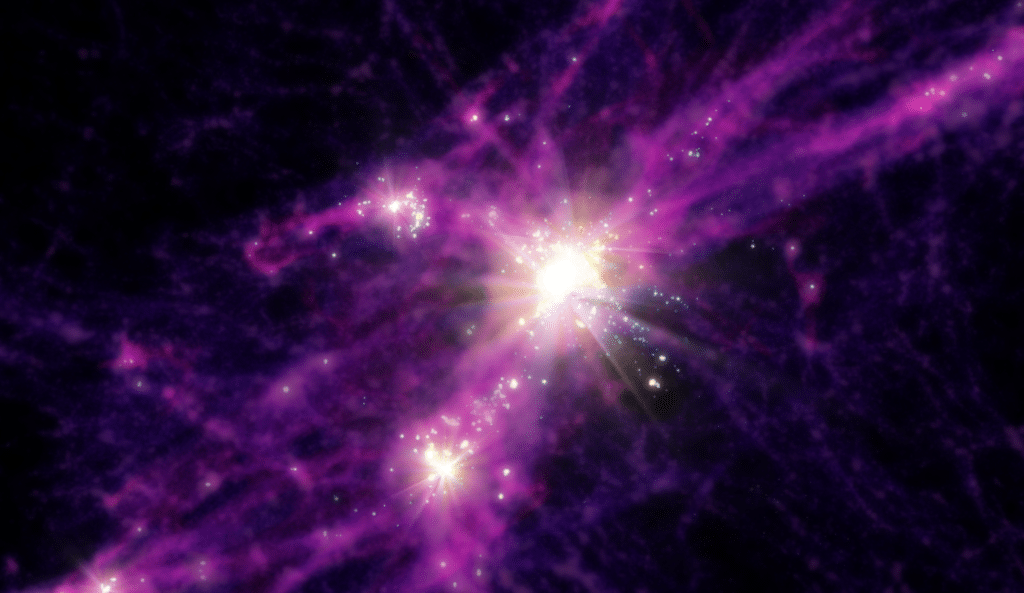At the edge of the universe, billions of light years away, there’s a time when the first galaxies were just beginning to light up. Think of it as the universe’s childhood. Scientists have always been keen to study this era because it helps us understand how galaxies, like our own Milky Way, came into existence. Recently, the James Webb Space Telescope (JWST), gave us an unprecedented peek into this ancient time, revealing some exciting and unexpected finds.
The JWST found a lot of really bright, big galaxies from that early era. This was surprising because we didn’t expect such large galaxies to exist so early in the universe’s history. These discoveries left astronomers with many questions. Were these bright galaxies truly from that ancient era? If they were, how did they form so quickly? And do these new findings fit with our current understanding of the universe’s history and growth?
Northwestern University researchers may have cracked the mystery. Contrary to initial beliefs, these galaxies might not be as massive as they appear. Instead, scientists say their eye-catching brightness could result from sudden, dazzling bursts of star creation.
“We were taken aback by the discovery of these galaxies. Usually, you’d think the brighter the galaxy, the bigger it must be. But these young galaxies didn’t have enough time since the Big Bang to get that big,” says senior author Claude-André Faucher-Giguère, in a statement. “Our findings now suggest that they were able to shine so brightly at such an early stage without being massive.”
The Bursty Star Theory
One fascinating idea being explored is that these early galaxies had what’s called “bursty” star formation. This means instead of forming stars at a steady rate, these galaxies might have had periods where they rapidly formed a lot of stars and then periods where they didn’t. This burstiness could make some galaxies appear particularly bright at certain times.
“A galaxy can shine brightly in two main ways – either it’s huge, or it’s excellent at producing light rapidly. In the latter scenario, the galaxy doesn’t have to be massive. Bursty star creation could cause these flashes of brilliance, which is what we believe is happening with these young galaxies,” says Guochao Sun, who spearheaded the research.
Researchers say the phenomenon could essentially create a cosmic fireworks show, followed by a long lull, and then another explosion of star births.

“Bursty star formations are more typical in smaller galaxies,” Faucher-Giguère notes. “We believe this process involves stars forming in a flurry, which then explode as supernovae a few million years later. These explosions can push gas out, which later gets pulled back in, fueling the next cycle of star creation. In more massive galaxies, their gravity keeps everything together, resulting in a more stable star-creating process.”
These revelations were made possible through intricate computer simulations, part of the Feedback of Relativistic Environments (FIRE) project. By digitally recreating how galaxies formed just after the Big Bang, the team discovered this “bursty” pattern.
The simulations also aligned with the Webb telescope’s observations, solidifying their theory.
While the idea of bursty star formations had been previously considered by astrophysicists, this team from Northwestern is the first to prove its feasibility through detailed simulations. And importantly, they did so without contradicting our existing understanding of the universe.
Faucher-Giguère summed it up, emphasizing the key role of massive stars: “Most of a galaxy’s brightness comes from its biggest stars. These giants burn fast and die young. Hence, a galaxy’s glow is more about the recent star births than its overall mass.”
So, the next time you look up at the night sky, remember: sometimes, it’s not about how big you are, but how brightly you can shine in the short time you have.
The research is published in The Astrophysical Journal Letters.












